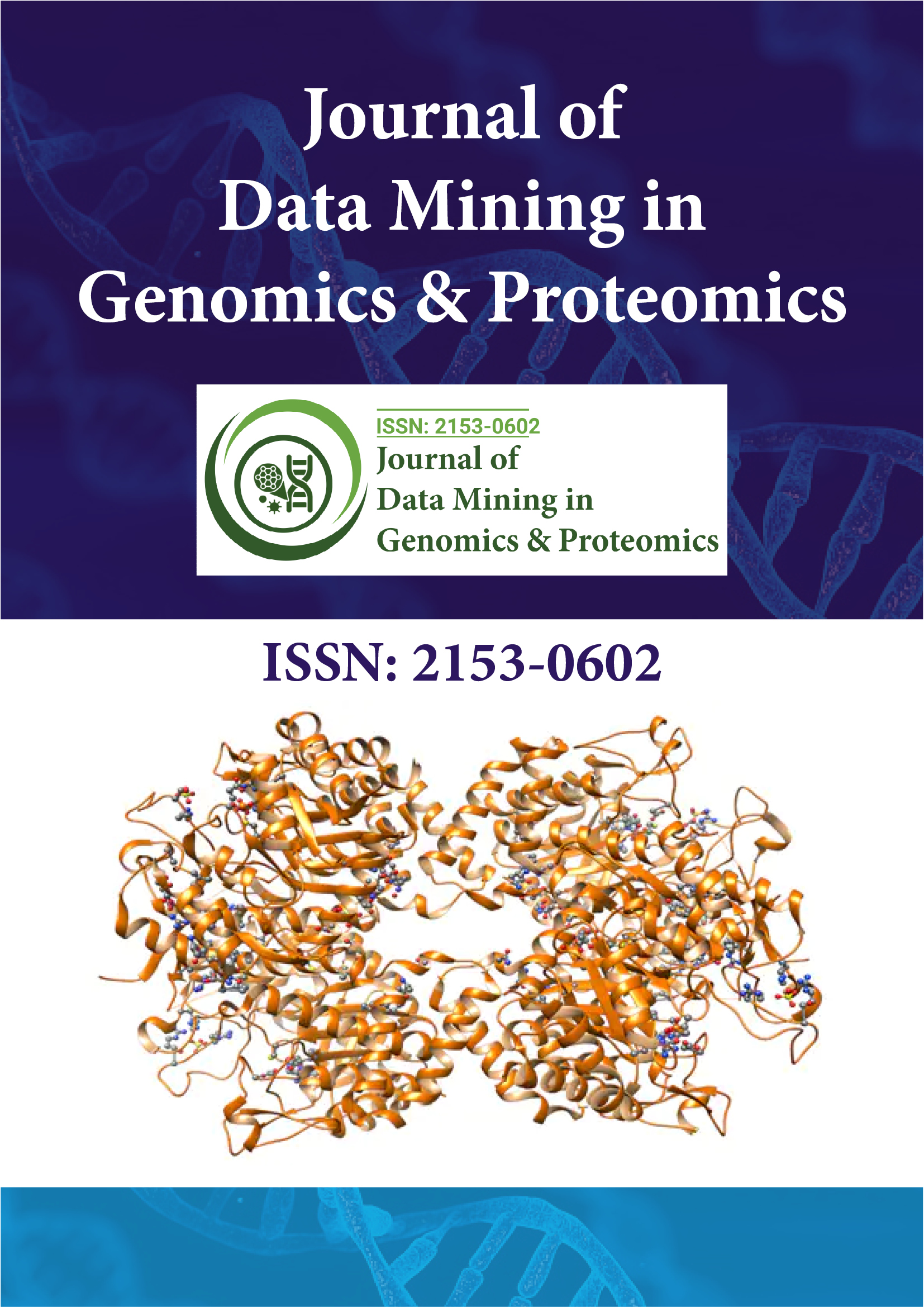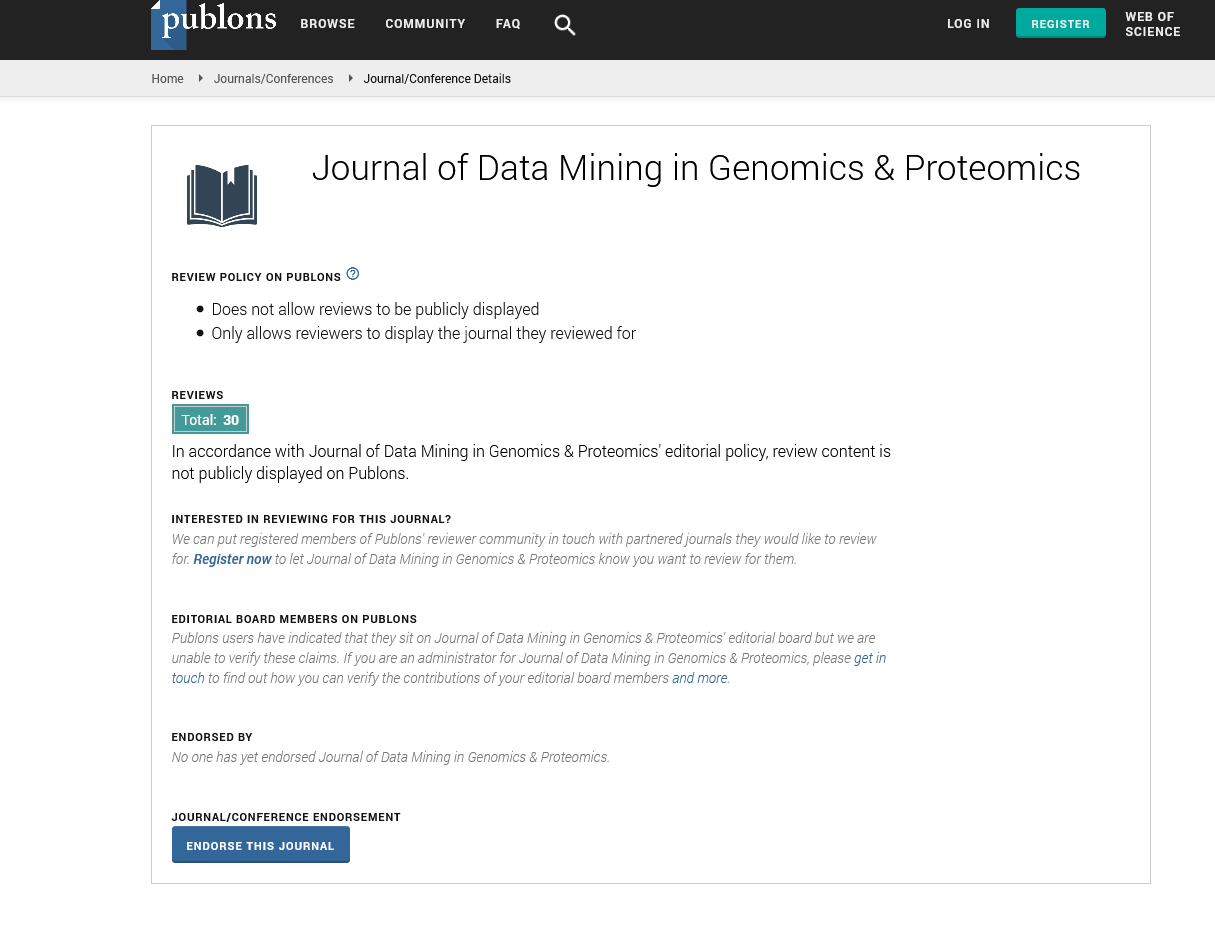Indexed In
- Academic Journals Database
- Open J Gate
- Genamics JournalSeek
- JournalTOCs
- ResearchBible
- Ulrich's Periodicals Directory
- Electronic Journals Library
- RefSeek
- Hamdard University
- EBSCO A-Z
- OCLC- WorldCat
- Scholarsteer
- SWB online catalog
- Virtual Library of Biology (vifabio)
- Publons
- MIAR
- Geneva Foundation for Medical Education and Research
- Euro Pub
- Google Scholar
Useful Links
Share This Page
Journal Flyer

Open Access Journals
- Agri and Aquaculture
- Biochemistry
- Bioinformatics & Systems Biology
- Business & Management
- Chemistry
- Clinical Sciences
- Engineering
- Food & Nutrition
- General Science
- Genetics & Molecular Biology
- Immunology & Microbiology
- Medical Sciences
- Neuroscience & Psychology
- Nursing & Health Care
- Pharmaceutical Sciences
Commentary - (2022) Volume 13, Issue 6
Utilizing Network Approaches to Bridge the Gap between Genotype and Phenotype
Christoph Keller*Received: 04-Nov-2022, Manuscript No. JDMGP-22-18812; Editor assigned: 07-Nov-2022, Pre QC No. JDMGP-22-18812 (PQ); Reviewed: 21-Nov-2022, QC No. JDMGP-22-18812; Revised: 28-Nov-2022, Manuscript No. JDMGP-22-18812 (R); Published: 05-Dec-2022, DOI: 10.4172/2153-0602.22.13.269
Description
Researchers have made great strides in recent years in identifying relationships between genetic differences and complicated behaviors. While genome-wide association studies have been able to identify genomic regions that may be associated with a variety of common human diseases, these findings have also highlighted the urgent need for new approaches that take our understanding of genotype-phenotype relationships all the way down to the molecular level. Computational methods are more pathway-centric in order to meet this new demand. These novel techniques frequently make use of interactions between genes and/or their products that are known or expected. We examine recently created network-based approaches in this study that aim to close the genotype-phenotype gap.
Numerous human genetic regions have been linked to the emergence of complex phenotypes by genome-wide association studies. The researchers discovered by this study may participate in cutting-edge pathways that affect disease pathogenesis. To close the gap between genetic association and function, however, therapeutic targeting of these pathways is necessary. To do this, causal genetic variants, casual genes, and impact directionality must first be validated. Grasp the experimental techniques available for assessing candidate variations is necessary for carrying out this activity, as is a basic understanding of how to evaluate the outcomes of genome-wide association studies and priorities candidates for future investigation.
Molecular phenotypes, also known as molecular phenotypes, are always connected to phenotypes at the organismal level, such as illnesses. Examples of this include the over- or under-expression of certain genes consequently; identifying the molecular level phenotypes that go along with them is one of the first steps toward understanding how organismal level phenotypic variations develop. In the past ten years, gene expression has become a molecular level feature that may be used as a molecular phenotype to classify diseases, identify therapeutic targets, and infer gene-gene interactions. The results are often more reliable and simpler to understand when gene expression variations are systematically examined under various settings and in the context of their molecular interactions. Furthermore, even when the function of a gene is understood, many genes are pleiotropic, making it difficult to understand their function outside of its environment.
Recent approaches therefore concentrate on finding phenotypic modules, which are clusters of genes or pathways, significantly enriched with genes whose expression changes are correlated with phenotypic changes. These approaches are based on the observation that a molecular perturbation typically affects whole modules and not just individual genes. The greater statistical power of a module-based technique also makes it possible to identify a disturbed module, even if the perturbation of each individual gene inside the module is not statistically significant. The majority of phenotypes is complicated and can manifest in a variety of ways. Determining the molecular pathways whose dysregulation is similar across different illness instances is therefore our first line of action, even though we eventually want to grasp the minor distinctions between people. Ideker's study made a proposal for one of the first network-based techniques to capture the effect of perturbation studies on a gene network. They combined yeast protein-protein and protein-DNA interactions with changes in gene expression that were seen in response to perturbations of the yeast galactose consumption pathway in an effort to discover regulatory and signaling mechanisms. Then, they looked for "active sub networks" using simulated annealing. The "active sub networks" technique, which does not otherwise quantify the connections between the genes or their expression, finds modules comprising genes that are differently expressed. To identify functional modules, however, similarity between expression patterns may be crucial. For instance, it may indicate that two genes have associated functional roles if the expression variations of two nearby nodes are connected with one another.
Finding the molecular relationship between illness phenotype and genotype in the era of precision medicine will provide fresh perspectives for the creation of innovative therapies. It will be more crucial than ever for researchers to comprehend GWASs, exome sequencing studies, and studies of rare variants as more human genetic information becomes available and improved. They also need to develop and implement pipelines for validating which variants and associated genes are responsible for disease pathophysiology. Such research is now feasible and will help to clarify the genetic and molecular bases of complicated human disorders by utilizing the techniques we outlined above.
Citation: Keller C (2022) Utilizing Network Approaches to Bridge the Gap between Genotype and Phenotype. J Data Mining Genomics Proteomics. 13:269.
Copyright: © 2022 Keller C. This is an open access article distributed under the terms of the Creative Commons Attribution License, which permits unrestricted use, distribution, and reproduction in any medium, provided the original author and source are credited.

